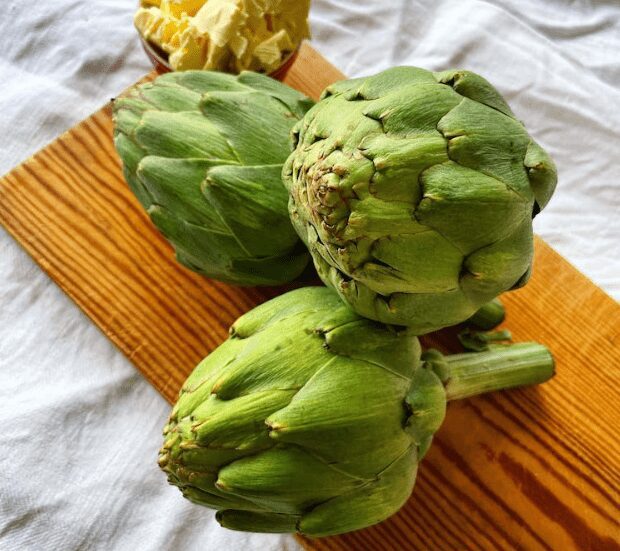Artichokes are a delicious and versatile vegetable that is in a season twice a year. From March to June and September to October, artichokes are at their peak flavor and texture. California artichokes are usually available all year round, but they taste best during their peak seasons.
During these times, other seasonal produce such as asparagus, broccoli, cauliflower, and spinach can be found in abundance alongside artichokes. Eating fresh artichokes can be an adventure in itself.
To prepare them, you need to trim off the tough outer leaves and then steam or boil them until they are tender. The heart of the artichoke is considered to be the best part and it has a nutty flavor that pairs well with many dishes.
Signs of A Fresh And Bad Artichokes

When selecting a fresh artichoke, it is important to look for certain signs. The leaves should be tight and compact, and discoloration is ok due to natural occurrences when exposed to air. A good artichoke should feel heavy for its size, indicating that it has a lot of moisture.
An open hole in the center and loose leaves indicate that the artichoke is bad and should not be purchased. Additionally, split or shriveled tips of the leaves are a sign of drying out, as well as a spongy texture when squeezed.
It is also important to check for any blemishes on the surface of the artichoke. If there are any brown spots or bruises, this indicates that the artichoke may have been mishandled during transport or storage.
Furthermore, if there is an unpleasant odor coming from the artichoke, this could mean that it has gone bad and should not be consumed.
How To Store Artichokes
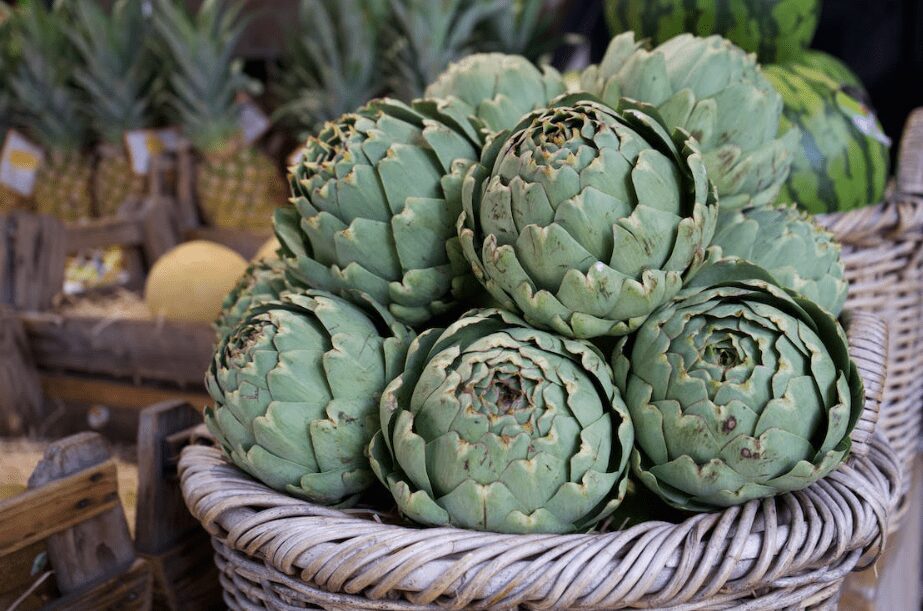
Storing artichokes properly is essential to ensure they stay fresh and delicious. Artichokes are a great addition to any meal, providing both nutrition and flavor. With proper storage, you can enjoy all parts of this unique vegetable without worry. Here’s the guide on how to store artichokes.
Refrigeration
Refrigerating artichoke is an important step to ensure that it retains its quality for a longer period of time. Artichoke should be refrigerated immediately if you don’t intend to cook it any sooner. The best way to store artichokes in the fridge is by wrapping them in a plastic bag and cutting the stem about half an inch.
This will help keep the artichoke fresh and prevent it from drying out. Additionally, you can sprinkle water on the stem to keep it hydrated. It is recommended to use a spray bottle just to ensure that you don’t soak it wet.
When storing artichoke in the refrigerator, make sure that there is enough air circulation around it so that moisture doesn’t build up inside the bag and cause spoilage.
Also, make sure to check on your artichoke every few days and discard any spoiled or wilted pieces as soon as possible. Refrigerating artichoke properly will help maintain its quality for a longer period of time and allow you to enjoy its delicious flavor for many meals ahead.
Freezing
Freezing is an effective way to prolong the shelf life of artichokes. By slowing down the enzymatic action that causes food spoilage over time, freezing can help keep artichokes fresh for up to 6-8 months.
However, it is important to blanch the artichoke before freezing in order to retain its flavor and color. To do this, trim off all the green leaves so that you remain with the meaty core (heart).
Then rinse the hearts under running water to remove any dirt. Once this is done, place them in boiling water for about 3 minutes and then transfer them into a bowl of cold water.
This will stop the cooking process and preserve their texture and flavor. Finally, place them on a baking sheet lined with parchment paper and freeze until solid. Store them in airtight containers or bags for best results.
Freezing artichokes is a great way to enjoy their unique flavor throughout the year without worrying about spoilage or loss of quality. With proper preparation and storage techniques, you can easily extend their shelf life while preserving their taste and texture. So if you’re looking for a way to make your artichoke last longer, consider freezing them.
The Best Ways To Store Artichokes
Artichokes are delicious and nutritious vegetables that can be enjoyed in many different dishes. However, it is important to store them properly in order to maintain their freshness and flavor. The best way to store artichokes is to freeze them at their peak of ripeness.
Before freezing, wash the artichoke with cold water and use a stainless steel knife and pot when preparing for freezing. To prevent browning, apply lemon juice on the cut surface of the artichoke before freezing. Refrigerating or freezing artichokes will help prolong their shelf life.
Additionally, if storing in the refrigerator, sprinkle the stems with water and place them in a loosely-sealed bag in the crisper drawer. This will help keep artichokes fresh for up to two weeks.
Overall, proper storage of artichokes is essential for preserving their freshness and flavor. By following these simple steps such as washing with cold water, and applying lemon juice on cut surfaces before freezing, you can ensure that your artichokes remain fresh and delicious for longer.
Preparing Artichokes For Cooking
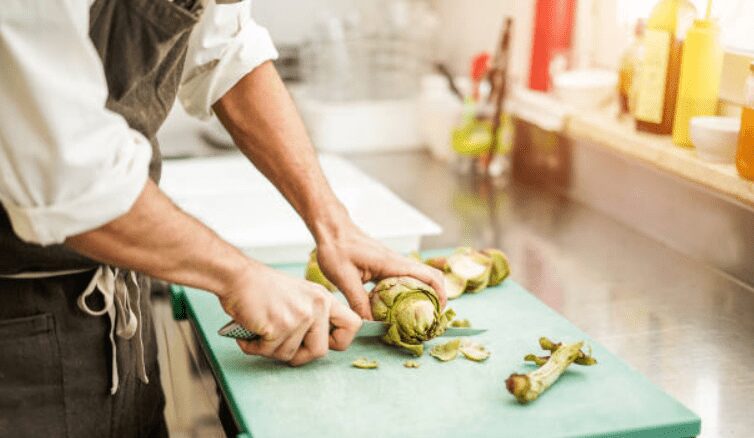
Preparing artichokes for cooking is a simple process that requires some careful attention. To begin, rinse the artichoke in cold water and use a colander to ensure it is properly rinsed.
Then, trim the stem and leaves carefully, removing any thorns or tips from the leaves. Use a sharp or serrated knife to cut off the top of the artichoke and rub lemon around freshly cut edges to prevent browning.
After this, peel the stems and cut off an inch of the flower. Finally, rub all cut parts with lemon juice or soak them in a bowl of water and lemon juice to further prevent browning.
For baby artichokes, simply trim off the stem, cut 1/4 inch off the top of the flower, and remove any dark-green petals.
Once you have prepped your artichokes for cooking, you can move on to preparing your favorite recipes! Artichokes are incredibly versatile and can be cooked in a variety of ways, from boiling to steaming to baking.
How To Cook Artichokes
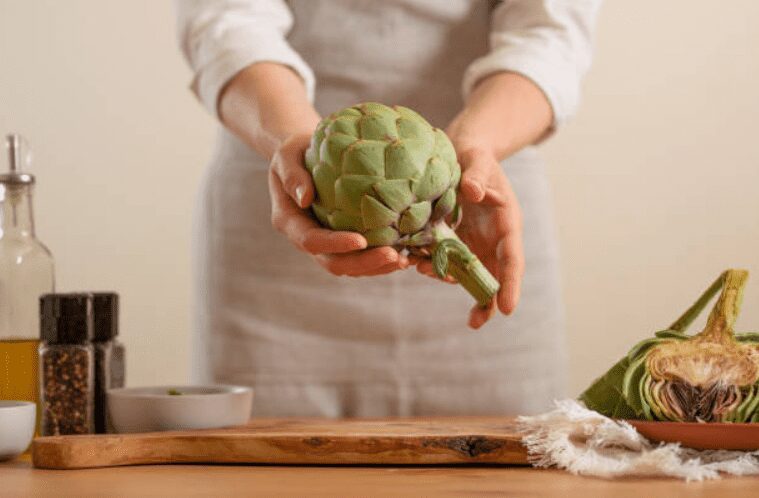
Steam – Put them in a steamer basket stem-side up to steam (so the steam can get up into the down-turned leaves). Depending on the size of the artichokes, place the basket over simmering water, cover the pan, and steam for 25 to 45 minutes, or until the vegetables are soft. When the stem and heart are easily pierced by a sharp knife, they are finished (like sticking a knife into a baked potato).
Boil – Prepared artichokes should be placed in a big saucepan of boiling water. For roughly the same amount of time as steaming, cover, lower the heat, and cook at a gentle simmer.
Bake – As you prepare the artichokes, preheat the oven to 425°F. Open the petals, and sprinkle the inside with salt, pepper, and/or finely chopped herbs. Artichokes should be placed in a foil package, which should then be placed within another foil packet. Depending on the size of the artichokes, bake for 1 hour to 1 hour and 20 minutes on a big baking sheet.
Baby artichokes are once more the exceptions. You can steam them for 15 minutes (don’t worry about how they turn out in the steamer basket), boil them for 15 minutes, or bake them for 25 minutes in a double foil packet.
Baby artichokes can be prepared and then quartered, sautéed, or stir-fried for up to 10 minutes, or until soft. They can also be cut into quarters and used with other vegetables in stews.
What Are The Parts That Are Edible?
When working with globe artichokes for the first time, they can be a little complicated. We’ve discovered that breaking them in half and examining the various parts is beneficial.
Heart – the entire heart can be eaten.
Outer Leaves – except for the flesh on the bottom where they join to the heart, the leaves cannot be eaten.
Inner Leaves – these are not edible since the bottoms lack any flesh that may be eaten. Although some claim you can chew the entire leaf, most people never found it to be particularly enjoyable.
Stem – the stem’s outer layer is typically stringy or stiff, but the interior is edible and almost identical to the heart.
Choke – the choke’s feathery texture makes it unpleasant to chew and can also get caught in your throat, which can result in choking. There is no poison in the choke but still not good to eat due to choking hazards.
Buying Tips For Fresh Artichokes
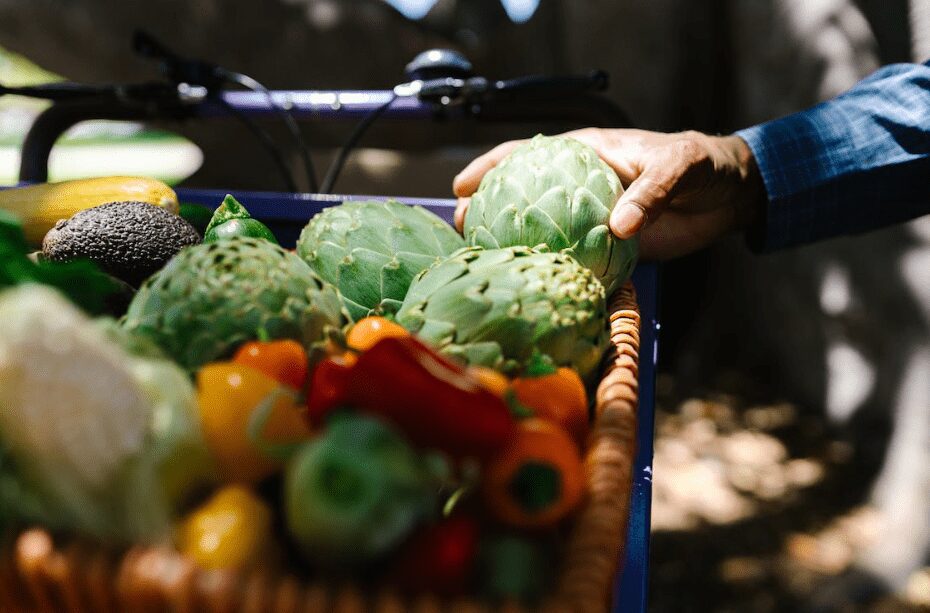
When it comes to buying fresh artichokes, there are a few tips that can help you make sure you get the best quality. First, test the weight of the artichoke to make sure it is firm and heavy. Look for green leaves that are tightly packed with purple undertones.
Squeeze the leaves to make sure they make a soft squeak sound, indicating freshness. Artichokes with some browning around the edges are ok, but look for artichokes with tightly-packed leaves that feel dense and heavy, and are a healthy green color. The “squeak test” is also an important indicator of freshness – simply squeeze the leaves and listen for a squeak.
When shopping for artichokes, be sure to check them over carefully before making your purchase. Feel for any soft spots or discoloration on the leaves as this could indicate that they have been stored improperly or have gone bad. Also, check for any signs of mold or mildew.

